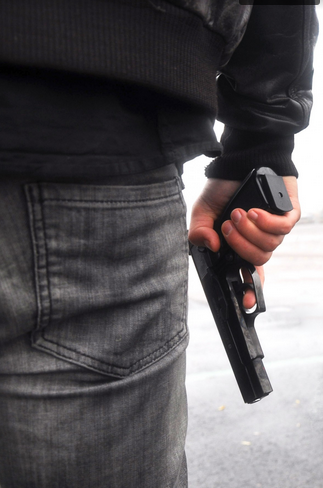No, We Are Not Facing a Crisis in School Safety
By F. Chris Curran
This op-ed was originally published in the Globe Post on April 19th, 2019. See the original post here.
With a recent report of a potential school shooter in Colorado preceding the two-decade anniversary of the Columbine shooting, public attention is again focused on school safety. After several high-profile school shootings last year, including those at Parkland, FL and Santa Fe, TX, it is easy to believe the narrative that schools face a safety crisis. Indeed, recent data suggest that most Americans see schools as less safe today than two decades ago.

This narrative, however, is misleading. As an educational researcher who studies school safety, I examined data from a newly released report by the federal government. This report draws on two decades of surveys related to school safety, and the results may surprise you.
Contrary to what one might assume from current narratives, national data suggest that the risk of violence at schools is no higher today than at the time of Columbine. Furthermore, students report feeling safer than they did two decades ago. Overall, students are generally quite safe at school, and no less so than two decades ago.
Earlier this week, the U.S. Department of Education and Department of Justice released Indicators of School Crime and Safety: 2018. The report summarizes trends in school safety.
Student Victimization
Overall, victimization rates tend to be similar between school and out of school locations. While youth are more likely to experience acts of theft or simple assault at school than away, they are no more likely to experience serious violent victimization at school as compared to elsewhere.
Especially good news is that rates of these non-homicide forms of victimization have consistently been falling over the last three decades. For youth aged 12-18, the rate of victimization in 2015 both at school and away from school is about a quarter of what it was in 1992.
Homicide at School
Among youth homicides, less than 2 percent of them occur at school. This is despite the fact that students spend a great percentage of their time at school relative to other locations.
Not only are deaths of students at school rare, there is little evidence that they are increasing. In fact, national data shows that the number of youth homicides at school tended to be lower in the 2000s and 2010s than in the 1990s. While there are exceptions, such as for 2012 when the Sandy Hook shooting occurred or for this past year when Parkland and Santa Fe occurred (this year is not yet in the federal data), the overall trend does not suggest consistent increases in school deaths over time.
Weapons and Fear
Not only are school homicides not consistently increasing, but there is evidence that the prevalence of weapons at school is actually decreasing. Among high schoolers, the percentage of students who reported carrying a gun at school in the previous 30 days decreased from 6 percent in 2001 to 4 percent in 2017.
Similarly, the percentage of students who reported being threatened or injured with a weapon at school is on the decline. In 2001, 9 percent of students reported being threatened or injured with a weapon at school. By 2017, only 6 percent of students did so.
Finally, the federal report suggests that, overall, students do not report high levels of fear at school. Less than 5 percent reported fear of attack or harm at school. What is more, this percentage is about half of what it was in 2001. This suggests students generally feel safe from serious harm at school.
School Safety Crisis that Isn’t
Taken as a whole, the evidence suggests schools are generally safe and that we are not experiencing a general trend towards more school violence. While any loss of life at school is tragic and unnecessary, our responses should be grounded in the evidence rather than false narratives about increasingly unsafe schools.
Increases in school security measures over the last several decades may be responding to a false perception of a problem. Worryingly, these responses, like more police in schools, harsher discipline, and other security measures, can actually have negative unintended consequences. Some argue then that the “real school safety problem” is not violence but the overly harsh response by schools.
Tragedies like the Columbine or Parkland shootings are horrific. That said, we should remember that such events are rare and not necessarily indicative of an increasing crisis in school safety.